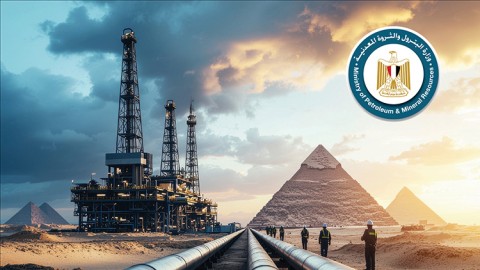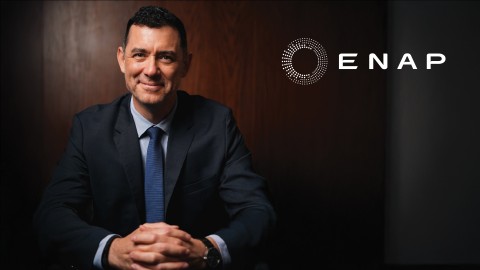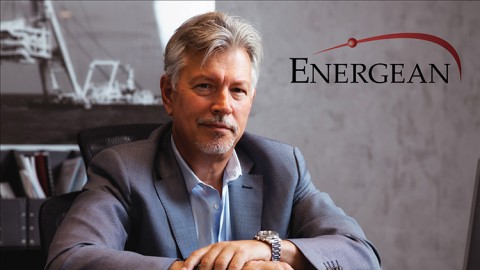By Adam Pollard – Principal Analyst Upstream, Nuomin Han – Managing Consultant Carbon Research
Upstream companies are under increasing pressure to decarbonise. Governments, investors, financial markets, society, and other stakeholders are pushing for change. Companies need to define their energy transition strategies, future-proof their business, and protect their social licence to operate.
There are strategic advantages to producing less carbon-intensive hydrocarbons. Some consumers are looking for end products with lower embedded emissions and may be prepared to pay a premium. Lower emissions operations not only offer environmental gains, but many of the steps are value accretive. This includes greater production efficiency, reduced leakage, and the capture – and monetisation – of flare gas and methane fugitives.
More and more companies are announcing carbon reduction commitments and net zero targets. Divestment is one way to help meet these goals, but for many assets, especially those already onstream, this simply passes the problem down the line. Applying decarbonisation solutions can reduce operating emissions where operators do want to retain their portfolio of assets.
Where do upstream emissions come from?
Emissions occur throughout the hydrocarbon value chain – from wellhead to end-use. A few upstream companies are taking the bold step to tackle Scope 3, which accounts for around 90% of all emissions in the value chain of a hydrocarbon. The majority are generated by combustion in power generation, transportation, and other final consumption.
But there is much still to do on scopes 1 and 2 at upstream installations, which currently generate over 1.2 billion tons of CO2e per year (approximately 3.4% of global emissions). These are the operational emissions that upstream producers have control over.
Each asset is different, so it will come as no surprise that there are regional variations. Oceania is heavily influenced by Australian LNG projects, high CO2 projects in Asia drive up venting to nearly 20% of total emissions. Flaring happens across the globe with the largest sources in the Middle East and Africa.
What are some of the solutions?
Solutions to reduce Scope 1 and 2 carbon emissions range in cost and complexity, from smaller-scale operational efficiency solutions and best practices to transforming power generation.
Low-carbon power
Around 70% of emissions are produced to power oil and gas operations – production, processing, liquefaction and drilling. The type of fuel used to generate power is crucial. Most assets are powered by fossil fuels – using a portion of the produced hydrocarbons. Electrification gives operators the option to move to low-carbon power, either directly from renewables or by connecting to the grid where the grid mix is cleaner than the current fuel supply.
As well as lower emissions, electrification reduces maintenance, lowers fuel requirements, increases uptime, and frees up more molecules for sale. But there are challenges:
Intermittency issues: renewable power may require back-up generation. Hooking up to the grid will only deliver emissions reductions if the power mix is cleaner and there is available capacity;
Retrofitting onstream projects: not all installations can be electrified. Of those that can, some may only be able to handle partial electrification over full;
Space and weight restrictions: electric motors can have a greater footprint and weight than the existing drive mechanisms, potentially limiting options offshore;
Field maturity: capital outlay required makes electrification of most late-life assets uneconomic.
Norway is the global leader in low-carbon upstream electrification. Its grid power mix is predominantly hydroelectric (90%+) – a renewable energy source without any corresponding intermittency issues. This provides an almost unique opportunity for major upstream emissions reductions. Norway and other North Sea countries are trialling dedicated offshore wind generation but without substantial incentives the economics are challenging.
Flaring reduction
Essential flaring is hard to avoid, but many companies are now signed up to the World Bank’s Zero Routine Flaring by 2030 initiative. However, in some countries, large-scale flaring is a function of the reliance on income from oil exports. The lack of local gas markets and infrastructure, and minimal penalties and regulation meant flaring was the most economical option.
A focus on flaring emissions has seen a 23% reduction since 2019. Operational improvements reduce the volume of excess gas and new investments have been made in commercialisation via local and export markets. Gas capture can provide an additional revenue stream for the companies involved, greater income via taxes for governments and help satisfy unmet power demand, as well as have environmental benefits. Key considerations include:
Gas markets: either domestic or export;
Project economics: resource scale, capital outlay and fiscal terms determine viability;
Number and size of flares: capturing from multiple sources can be a deterrent for flare-gas collection, even where local markets exist;
Location of point sources: multiple small-scale emitting point sources with a large dispersion range are more challenging than a single large-scale point source;
Midstream infrastructure: requirement for gas transport.
Reducing fugitive (methane) losses
Methane is the molecule that packs a punch – it is 28 times more potent (over a 100-year horizon) than its carbon counterpart according to the 5th IPCC Assessment Report (2014). The oil and gas sector contributes almost 25% of global methane emissions, and as such it has a key role to play. Many companies and governments have already signed up to reduction pledges, including:
Global Methane Pledge: announced at COP26 with the target to cut methane emissions by 30% by 2030. Globally, 150 parties signed pledges covering around 53% of global methane emissions;
Oil and Gas Climate Initiative (OGCI): members, comprising over one third of global operated production, have pledged net-zero methane emissions by 2030, in which Wood Mackenzie is a supporter and has endorsed this commitment.
Upstream methane losses are primarily via three sources – equipment leaks (valves, pipes, compressors etc.), incomplete flare combustion and venting. To address these losses, operators can:
Identify, measure, monitor: methane leaks are often small and difficult to detect. Understanding areas to target helps determine the best solution;
Flaring and venting reductions: prevents methane release but the same challenges for reducing these sources apply;
Replace high bleed devices: plug/remove the leaks.
Decarbonisation – drivers for change
The pace of decarbonisation varies from region to region, and asset to asset. One of the key differentiators is the level of government support. 150 countries have made pledges to reach net zero by 2050 to 2070, covering almost 90% of global emissions. However, no major economy is on track to achieve these very challenging goals.
Commitments that have been translated into law only cover around 16% of the total 36 gigatons of CO2 emitted in 2021, meaning that pressure to decarbonise will increase significantly as governments work pledges into legislation. So far, 77 national and sub-national carbon prices and markets are in place, covering around 26% of global carbon emissions (of these, China is around one-third), and another 41 are under consideration. We expect significant global expansion of carbon prices, and increased prices aimed at meeting 2050 goals.
Some countries have also been exploring carbon border taxes, creating incentives for other economies to introduce or lift their domestic carbon prices. The European Union (EU)’s Carbon Border Adjustment Mechanism (CBAM) reporting obligations will start with six selected sectors in October 2023, and transition into financial obligations starting from 2026. Although oil and gas is not among the initial CBAM-targeted sectors, the EU plans to expand CBAM to all sectors under the EU ETS, which include upstream and refinery operations. At that point, importers of ETS-relevant commodities, including both crude and refined products, will need to pay carbon prices aligned with the ones paid by EU producers (which have been around US$100/ton CO2e for most of 2023).
Most countries’ oil and gas upstream operations are not directly subject to carbon prices yet. Carbon pricing mechanisms typically encompass Scope 1 emissions in specific sectors directly, such as power generation first, followed by some industrial sectors.
Integrated companies can be impacted directly, while independent upstream producers will be indirectly affected by lower demand down the value chain and by carbon prices passing on higher power prices to the grid.
In addition, carbon pricing regulations are evolving with some compliance regimes starting to target upstream-specific emissions. For example, the recently announced UK ETS reform package will include vented carbon dioxide from the upstream oil and gas sector from 2025. Upstream companies will face increasing regulatory requirements for their emission monitoring and associated financial obligations.
Tackling Scope 1 and 2 emissions is fast becoming the minimum requirement for upstream operators, as they face increasing stakeholder pressure to decarbonise. Even if they do not have any direct value at risk from carbon prices today, due to the location of their operations, they may not be able to attract investment unless they show structured and realistic plans for decarbonising their operations.
For this reason, many companies have taken bold initiatives to reduce Scope 3 emissions, not just Scope 1 and 2. Given the lack of direct control, upstream operators can change their vendors and buyers towards lower-carbon value chains, for example, or take a more hands-off approach by buying carbon offsets to compensate for emissions down the value chain.
The most successful strategies will employ a mix of approaches that leverage their existing subsurface and market capabilities and employ them in areas such as carbon capture and storage. Taking bold, decisive action on decarbonisation is the only way to create sustainable business models that will continue to attract investment.








